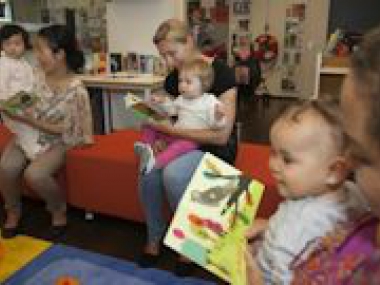PREVENT’s raison d'être: Trust in cultural bridges for diversity
Edited on
19 February 2015Co-operation and the fluid exchange of knowledge and experience beat at the heart of the PREVENT network, set up in 2012 by ten European cities to reduce early school leaving (ESL).
And while parents are a major success factor in ESL reduction, many actions and projects aimed at ESL prevention do not address or include parents as a target group. Clearly bridging this gap, PREVENT aims to stimulate realistic parental involvement.
Since 2012 the network has been busy identifying existing good practices for parental involvement that can be shared and implemented at a local level, and in a sustainable way; as well as developing new methods to involve parents in preventive measures.

What is good practice? A really good solution to a really tricky problem
Good practice, according to the PREVENT team, must be about flexibility, transparency, transferability and stakeholder involvement. It has to be realistic and practical, built on needs, and possible to sustain. It should promote networking, innovation, diversity – and it must be results-orientated, and built on knowledge, theory and/or experiences.
Local level: capturing good practice
Ensuring joint learning and a starting point for the mapping process, we asked ten questions at a local level to the cities to present and analyse their own good practices. The format was then used for knowledge sharing and peer-review activities during the two first transnational meetings.
The right tools
We used several tools to leverage our thought processes and to build a good learning capacity.
1. The ‘Constructive friends’ manual: a peer-learning tool developed to support capacity building, innovation transfer and problem solving. For success, each participant must do their homework, be well prepared and participate with an open attitude towards other participants.
2. Bilateral meetings matrix (BMM) to assess the joint learning. All BMMs produced by cities will be analysed by the PREVENT expert team. Output from this exercise will provide a picture of how PREVENT cities have collaborated in transferring, implementing and developing good practices linked to parental involvement in ESL prevention.
3. Structural indicator matrix (SIM) – used as a complementary tool to enhance strategic thinking and to promote a successful process for developing sustainable Local action plans, LAPs. SIM aims to introduce core structural indicators to discover and over-come gaps in partner cities. SIs can be yes and no-questions, something that can be changed (for example laws, spaces, roles and responsibilities); SIs can operate flexibly at different levels of a system and at different levels of concreteness and abstraction; SIs challenge network cities for their Local Action Planning work, addressing both existing and missing features (gaps) in current systems and policies - to ‘think outside the box’ when drafting service needs, actions and strategies for the future.
The guide
Following months of exchanges, and with over 30 pages of ‘good practice’ examples and useful data on ESL, in March 2014 we published our 62 pages Good Practice Sourcebook, written by lead expert Ulf Hägglund.
The right strategy for Europe
In September 2014 we published a further pivotal document for the network, written by Prevent Thematic Expert, Paul Downes. A Policy Recommendations report, the document aims: to guide the short and medium-term strategic planning of the 10 URBACT PREVENT city municipalities and all other municipalities, local authorities and schools across Europe with regards to parental involvement in education for ESL prevention.
The review is based on three inter-related aspects. First, an analysis of EU Commission and Council documents on early school leaving and social inclusion from the perspective of parental involvement in education. Second, a dialogue and ongoing consultation process with the 10 municipalities engaged in the URBACT, PREVENT project with regard to key themes, practices and priorities in this area. And third, it takes a closer look at relevant international research.
And emerging from the review? A holistic, differentiated approach to parental involvement in ESL. With the development phase of PREVENT now over, today we’ve stepped into the implementation phase.
Break Out boxes
WHAT IS ESL?
ESL includes all forms of leaving education and training before completing upper secondary education or the equivalent in vocational education and training.
------------------------
PREVENT – WHO ARE WE?
PREVENT is a network of ten European cities that chose to gather around the urgent question of early school leaving. Over 14% of the EU’s young people leave the education system after completing - at the very best - the first cycle of secondary school.
Partner cities:
- Antwerp (BE)
- Catania (IT)
- Den Hag (NED)
- Gijon (ES)
- Munich (DE)
- Nantes (FR)
- Sofia (BG)
- Stockholm (SE)
- Tallinn (EE)
- Usti nad Labem (CZ)
--------------------------------
Break-Out quote
“ESL is a process in a young person’s life, meaning there are many opportunities to act and react along the way!”
 Submitted by URBACT on
Submitted by URBACT on




